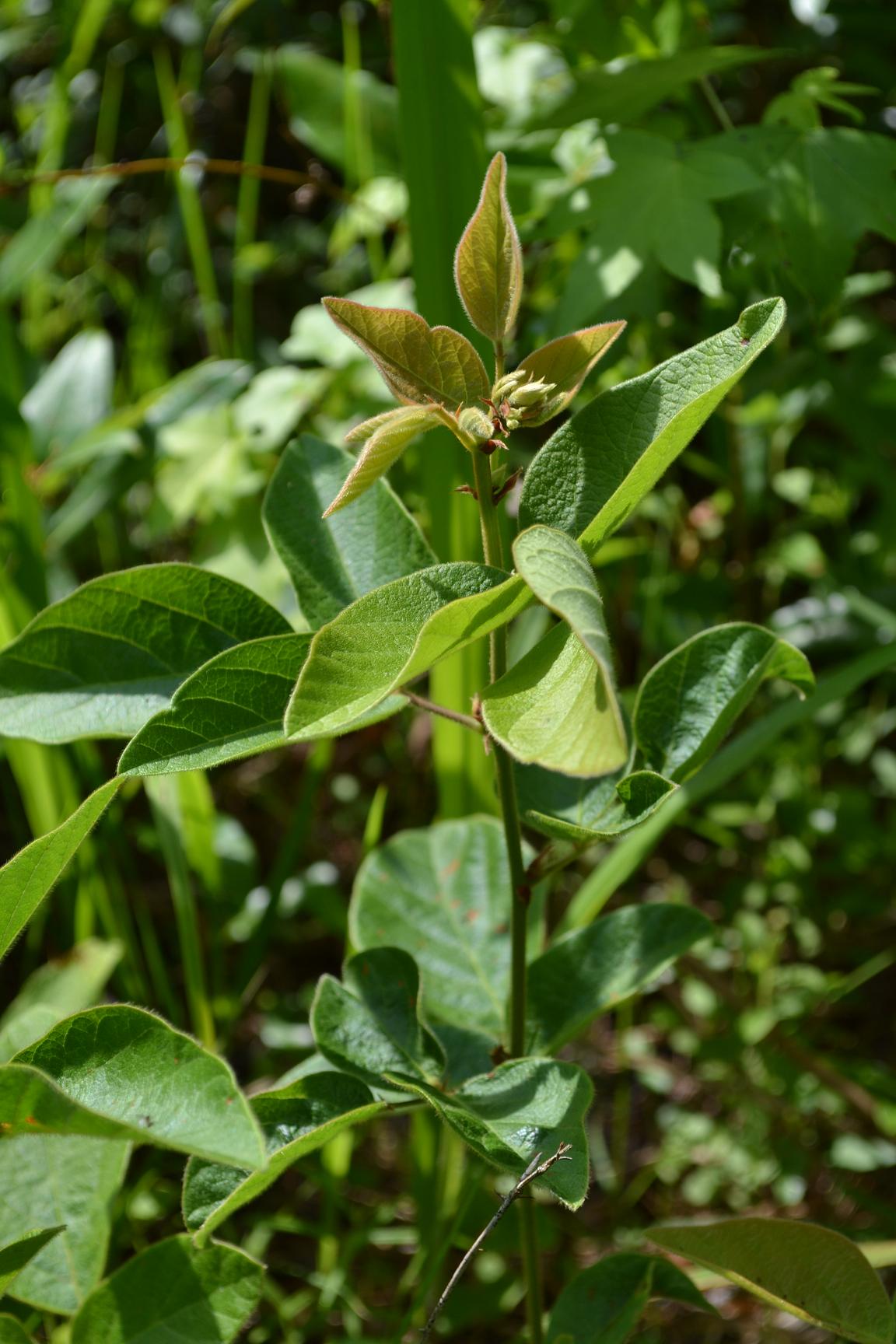Desmodium viridiflorum
| Desmodium viridiflorum | |
|---|---|

| |
| Photo taken by Kevin Robertson | |
| Scientific classification | |
| Kingdom: | Plantae |
| Division: | Magnoliophyta - Flowering plants |
| Class: | Magnoliopsida – Dicotyledons |
| Order: | Fabales |
| Family: | Fabaceae ⁄ Leguminosae |
| Genus: | Desmodium |
| Species: | D. viridiflorum |
| Binomial name | |
| Desmodium viridiflorum (L.) DC. | |

| |
| Natural range of Desmodium viridiflorum from USDA NRCS Plants Database. | |
Common name: velvetleaf ticktrefoil
Contents
Taxonomic notes
Description
Desmodium viridiflorum is a perennial herbaceous species.
Distribution
It is distributed widely throughout the eastern U.S. (NRCS Plants Database).
Ecology
It is a legume with a relatively high nitrogen-fixation rate and acetylene reduction rate (Hendricks et al 1999; Lajeunesse et al 2006).
Habitat
In the southeastern coastal plain it is associated with open, frequently burned longleaf, shortleaf pine-oak-hickory, loblolly pine upland native and old-field communities and open upland hardwood forests (Ultisols) (Lajeunesse et al 2006, FSU Herbarium). It occurs in both native (never plowed) areas and in old-field habitats and areas with recent soil disturbance (FSU Herbarium). It is found on loamy sands and sandy loams (FSU Herbarium).
Phenology
In the southeastern coastal plain it flowers from July-September and fruits July-October (FSU Herbarium).
Seed dispersal
Seed bank and germination
Fire ecology
Desmodium viridiflorum was noticeably more abundant in burned plots (Hendricks et al 1999). In the Oconee National Forest, the plots had a history of no burning, there were 28 individuals (of Desmodium viridiflorum) per ha (Hendricks et al 1999). In the Piedmont National Wildlife Refuge, the plots were burned in the dormant season (winter) every 4-5 years, there were 2,563 to 3,953 individuals (of Desmodium viridiflorum) per ha (Hendricks et al 1999). Areas that are burned more frequently are more likely to have established populations of D. viridiflorum and will be persistent and large enough to affect nitrogen availability (Hendricks et al 1999). In drought conditions, water stress is suggested by Hendricks and that the stress contributes to loss of leaf area, which in turn, reduces the photosynthate available to maintain the high nitrogen fixing rates (Hendricks et al 1999).
Pollination
Use by animals
Diseases and parasites
Conservation and Management
Cultivation and restoration
Photo Gallery
References and notes
Florida State University Robert K. Godfrey Herbarium database. URL: http://herbarium.bio.fsu.edu. Last accessed: June 2014. Collectors: Tom Barnes, Ritchie Bell, Boothes, Loran C. Anderson, A.F. Clewell, R.K. Godfrey, Randy Haynes, Samuel B. Jones, R. Komarek, R. Kral, T. MacCleandon, Sidney McDaniel, R. A. Norris, A.E. Radford, Cecil R. Slaughter, V. Sullivan, and J. Wooten. States and Counties: Florida: Bay, Franklin, Jackson, Leon, Liberty, Okaloosa, Putnam, Volusia, and Wakulla. Georgia: Grady and Gilmer. South Carolina: Marion. Mississippi: Hancock. Alabama: Cleburne. North Carolina: Davie.
Hendricks, J. J. and L. R. Boring (1999). "N2-fixation by native herbaceous legumes in burned pine ecosystems of the southeastern United States." Forest Ecology and Management 113: 167-177.
Lajeunesse, S. D., J. J. Dilustro, et al. (2006). "Ground layer carbon and nitrogen cycling and legume nitrogen inputs following fire in mixed pine forests." American Journal of Botany 93: 84-93.
NRCS Plants Database http://plants.usda.gov/java